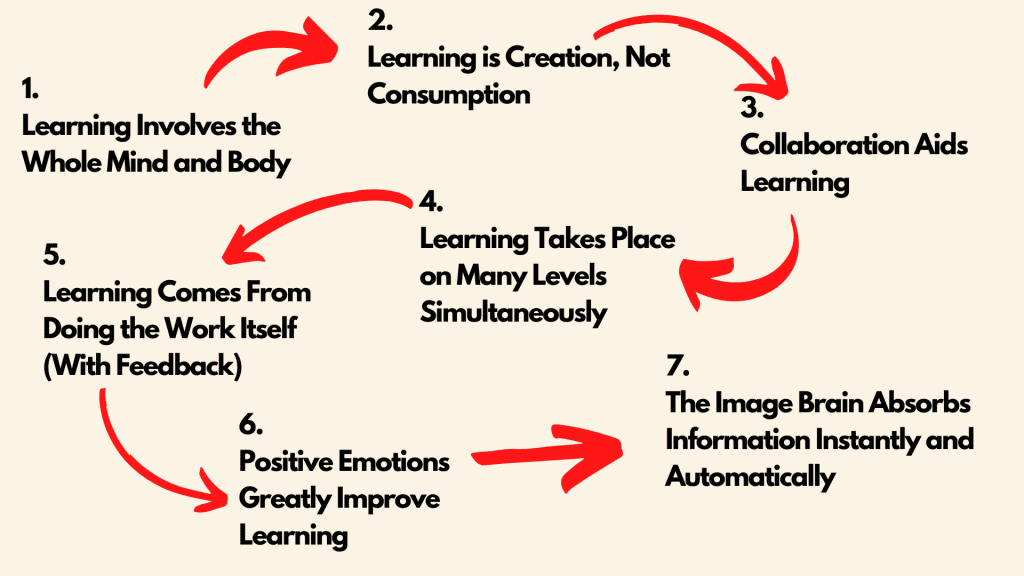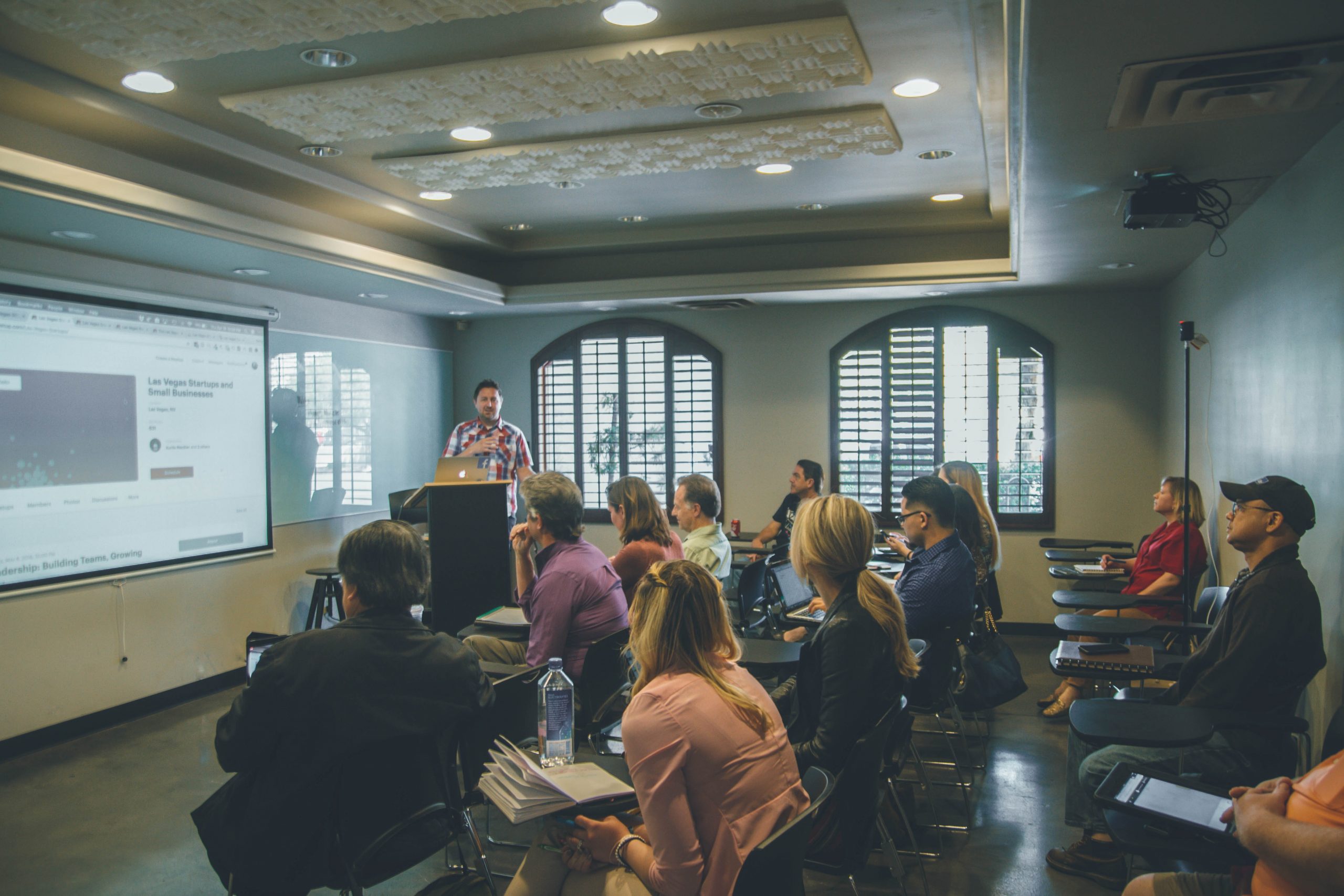Have you ever sat in a lecture theatre or watched an online video, where someone was speaking in a monotone voice, just reading off a page, and felt no connection whatsoever to the content?
Some people have a knack for making the material interesting, but too often educational content feels dull and burdensome, and in these cases it takes incredible concentration and effort to take anything away from it.
If you’re someone that teaches others or creates content that you want people to see and enjoy, it’s in your best interests to make it exciting. You want an environment where students feel empowered, active, and that gets them thinking.
This is where Accelerated Learning comes in. It’s a teaching methodology designed to help educators create high-impact, low-cost programs, the type that engage both mind and body.
Accelerated Learning
As its name suggests, Accelerated Learning treats people’s time as valuable. Sometimes a better education doesn’t require more study time, but a different relationship with the content. Fully-engaged students can absorb a lot more than those fighting to maintain attention.
To that end, Dave Meier founded the Center for Accelerated Learning in 1980, and published his principles in a handbook in 2000.
Using the 7 principles below, he’s trained professionals in large companies including Starbucks, AT&T, Intel, and American Express.
Just as they’ve guided him, the principles can help you design and structure your course more efficiently, improve the retention rate of your students, boost their future job performance, and help create more fulfilling communities and learning environments.
The 7 Principles

1. Learning Involves the Whole Mind and Body
Learning isn’t just a cerebral thing—it includes emotions and feelings, senses like sights, sounds, taste and smell, and the tactile sensations from movement and physical interaction with the environment.
Accelerated Learning requires getting students out of their chairs, and away from their desks and screens. Get them to build or fix something, move and engage with things.
2. Learning is Creation, Not Consumption
Learning isn’t a passive activity of absorbing information, you create knowledge as you rearrange previous assumptions and connect it to related ideas.
As everybody holds different beliefs and ideas to begin with, they’ll each interpret new material in their own way. You can’t just present information statically and hope they’ll all take the core message away.
Relate material to something they know, or challenge them to find connections. Encourage questions, and let them follow their curiosity where possible.
3. Collaboration Aids Learning
We’re social creatures, and we learn more when cooperating and interacting with others.
Peers help us see things from new perspectives, identify blind spots in our understanding, and incline us towards helping others. It’s a two-way street, a feedback loop, and it’s much more effective than an isolated experience.
Accelerated Learning won’t happen when students are detached from one another, so find ways of creating group activities.
4. Learning Takes Place on Many Levels Simultaneously
The brain doesn’t process experience sequentially but in parallel. It’s doing a lot at every moment, even if we’re not aware of it all.
There are sights, sounds, smells, feelings, memories, as well as both conscious and unconscious processes.
Try to engage people on many levels at once, give them hands-on problems that require past experience, recently learned material, and information they don’t yet have. Spark their creativity.
5. Learning Comes From Doing the Work Itself (With Feedback)
It’s necessary to recall and use information in the same context we expect to use it out in the wild. We need to practice the skill to master it, and we have to recall what we want to remember.
This is what psychologists call a desirable difficulty—it’s easy to reread material, to jog your memory by looking over your notes, but you won’t always have your notes available, at some point you have to use your head, and that’s what should be practised.
Dave Meier says it well: “We learn how to swim by swimming, how to manage by managing, how to sing by singing, how to sell by selling, and how to care for customers by caring for customers.”
6. Positive Emotions Greatly Improve Learning
Positive feelings improve learning. They help open the mind and make us more creative, they are calm and relaxing.
Negative feelings, by contrast, are destructive to the learning experience. They’re stressful, they make us close-minded and cripple our creativity.
Foster an environment where people feel welcome. Be careful how much pressure you apply, be conscious of how you come across, be flexible and let students direct themselves when possible, and add rewards for certain achievements.
7. The Image Brain Absorbs Information Instantly and Automatically
While language is an invaluable tool you’ll inevitably rely on, people are more visual—the whole occipital lobe at the back of the brain is dedicated to processing visuals.
It helps us to see concrete images more than listen to or read abstractions. Visualising information is also a great way to let students’ creativity shine.
Drawing, mind-mapping, creating charts and diagrams, and other ways of picturing information take advantage of this.
Building Your Learning Experience
To take full advantage of the time you have with your students, build an environment that makes learning fluid — not too complex or overwhelming, nor too boring or easy.
Accelerated Learning straddles that boundary, and it’s the same condition that often leads to flow experiences. It should require effort, an active mind and imagination, while allowing students to be their own agents, to follow their curiosity and learn for themselves.
How you create your course or content is up to you, but the more you can incorporate these 7 principles, the more you’ll ensure your students walk away with true knowledge—not just information.




